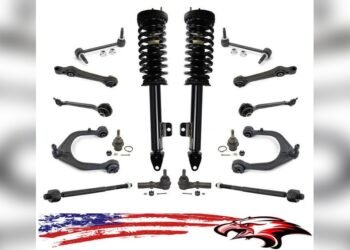Having trouble with your car not going into gear? You’re not alone.
This problem can be frustrating and worrisome. It can happen to both manual and automatic transmissions. Understanding the causes can help you get back on the road. A car that won’t go into gear can be a major hassle. It disrupts your day and may signal a serious issue.
This problem can arise due to several reasons. It could be a simple fix or something more complex. Knowing the common causes can save you time and money. This blog post will guide you through the possible reasons why your car won’t shift into gear. We aim to provide clear insights to help you diagnose and address the issue. Stay tuned to learn more.
Common Causes
Experiencing a car that won’t go in gear can be frustrating. Understanding the common causes can help you address the issue quickly. In this section, we will explore two major reasons why your car might not shift gears smoothly. These are low transmission fluid and a worn clutch.
Low Transmission Fluid
Transmission fluid is essential for your car’s gear system. It lubricates the moving parts and helps to shift gears smoothly. If the fluid level is low, gears may not engage properly. Check the transmission fluid regularly. Ensure it is at the correct level and in good condition. Old or dirty fluid can also cause issues. Replacing the fluid can often solve the problem.
Worn Clutch
A worn clutch is another common cause of gear problems. The clutch connects and disconnects the engine from the transmission. Over time, the clutch can wear out. This makes it hard to shift gears. You might notice a burning smell or hear strange noises. If the clutch is worn, it may need to be replaced. Regular maintenance can help extend the life of your clutch.
Checking Transmission Fluid
Your car won’t go in gear? The problem might be the transmission fluid. Checking the transmission fluid is a simple task that anyone can do. This guide will show you how to do it step by step. Let’s start with locating the dipstick.
Locating The Dipstick
The transmission dipstick is usually near the engine. It has a bright handle, often red or yellow, making it easy to find.
Here is a quick guide to locating the dipstick:
- Park your car on a level surface
- Turn off the engine
- Open the hood
- Look for the dipstick near the engine
Once you have found the dipstick, you can move on to assessing the fluid levels.
Assessing Fluid Levels
Assessing the fluid levels is important. Low transmission fluid can cause shifting problems.
Follow these steps to check the fluid levels:
- Pull out the dipstick
- Wipe it clean with a rag
- Reinsert the dipstick fully
- Pull it out again
- Check the fluid level on the dipstick
The dipstick has markings showing the optimal fluid level. If the fluid is below these markings, you need to add more fluid.
Remember, the transmission fluid should be clear or pink. If it is dark or has a burnt smell, it might be time for a change.
Checking the transmission fluid regularly can prevent many issues. Keep your car running smoothly by following these simple steps.
Inspecting The Clutch
Experiencing issues with your car not going into gear? The clutch might be the culprit. Regular inspection of the clutch can save you from bigger problems. Here, we will guide you through identifying signs of a failing clutch and how to adjust it.
Signs Of A Failing Clutch
Several symptoms indicate a failing clutch. Knowing these signs can help you diagnose the problem early.
- Slipping Clutch: The engine revs, but the car doesn’t move as expected.
- Hard Shifting: Difficulty in changing gears or grinding noises.
- Soft or Spongy Pedal: The clutch pedal feels soft or spongy when pressed.
- Burning Smell: A burning smell, especially during clutch engagement.
Clutch Adjustment Tips
Adjusting the clutch can sometimes solve gear engagement issues. Here are some tips for adjusting the clutch.
- Locate the Adjustment Mechanism: This is usually found near the clutch pedal or on the clutch cable.
- Adjust the Free Play: Ensure there is a small amount of free play in the pedal. This prevents the clutch from slipping.
- Test the Pedal: After adjustment, test the clutch pedal. It should feel firm and engage smoothly.
- Check for Leaks: Inspect for any fluid leaks that might affect clutch operation.
Regular maintenance and timely adjustments can extend the life of your clutch. It also ensures your car runs smoothly.

Credit: www.youtube.com
Examining The Gear Linkage
When your car won’t go in gear, examining the gear linkage is crucial. The gear linkage connects the gear shift lever to the transmission. Problems in this system can prevent your car from shifting gears properly. This section will discuss common issues with gear linkage. We will focus on linkage misalignment and lubrication needs.
Linkage Misalignment
Linkage misalignment can cause gear shifting problems. This happens when the linkage components are not aligned correctly. It may be due to wear and tear or improper adjustments. Regular checks can help detect misalignment issues early. If you find misaligned parts, adjusting them might solve the problem.
Lubrication Needs
Lubrication is vital for smooth gear linkage operation. Without proper lubrication, parts can stick or wear out quickly. Grease the linkage regularly to keep it working smoothly. Check for dirt or debris that can hinder lubrication. Clean and lubricate the parts to ensure optimal performance.
Electronic System Issues
One of the common reasons your car won’t go into gear is due to electronic system issues. Modern vehicles heavily rely on electronic systems to function properly. When these systems fail, it can result in gear shifting problems. Below, we explore two major electronic issues: sensor malfunctions and ECU problems.
Sensor Malfunctions
Sensors play a crucial role in the functioning of your car’s transmission. They provide necessary data to the car’s computer system, ensuring smooth gear shifts. If a sensor fails, the transmission may not receive the correct information to operate.
- Transmission Fluid Temperature Sensor: This sensor monitors the temperature of the transmission fluid. If it malfunctions, the system may prevent gear shifts to avoid damage.
- Speed Sensor: It measures the speed of the vehicle. A faulty speed sensor can disrupt the timing of gear shifts.
- Throttle Position Sensor: This sensor communicates the throttle position to the ECU. If it fails, the engine control unit might not adjust the gears properly.
Regular sensor checks can help avoid these issues. If you suspect a sensor problem, consult a mechanic for a diagnosis.
Ecu Problems
The Engine Control Unit (ECU) acts as the brain of your car’s electronic system. It processes data from various sensors and controls many functions, including the transmission.
| Common ECU Issues | Impact on Gear Shifting |
|---|---|
| Software Glitches | Can cause erratic gear shifts or failure to shift gears. |
| Corrupted Data | Results in incorrect data processing, affecting transmission performance. |
| Electrical Problems | Leads to communication failure between the ECU and transmission. |
To address ECU problems, updating the software or resetting the unit might help. In some cases, replacing the ECU is necessary. Always seek professional advice for complex electronic issues.

Credit: www.invygo.com
Solving Hydraulic Problems
Your car won’t go in gear? Hydraulic problems might be to blame. Solving these issues can get your car running smoothly again. Let’s explore some common hydraulic problems.
Bleeding The Clutch
Air in the clutch line can cause gear shifting issues. Bleeding the clutch removes this air. This process ensures smooth clutch operation. Start by locating the bleed valve. Attach a clear hose to the valve. Place the other end in a container with brake fluid. Open the valve and have someone press the clutch pedal. Close the valve when no air bubbles appear. Repeat if necessary.
Master Cylinder Issues
The master cylinder plays a key role in clutch operation. If it’s faulty, shifting gears becomes difficult. Check for leaks around the cylinder. A leaking cylinder needs replacement. Inspect the fluid level regularly. Low fluid can indicate a problem. Refill as needed, but consider professional help if the issue persists.
Dealing With Frozen Cables
Frozen cables can be a common issue in cold weather. This problem might prevent your car from going into gear. Knowing how to handle frozen cables is crucial for smooth driving.
Identifying Frozen Cables
First, determine if the cables are frozen. Common signs include:
- Difficulty shifting gears
- Stiff gear lever
- No response when shifting gears
If you notice these signs, the cables might be frozen.
Thawing Techniques
Once you identify frozen cables, use the following methods to thaw them:
- Warm up your car. Start the engine and let it run for at least 10 minutes.
- Use a hairdryer. Direct warm air on the cables for 10-15 minutes.
- Apply de-icing spray. Spray it directly on the cables. Wait for a few minutes.
These techniques should help you get your car moving again.
When To Seek Professional Help
Experiencing issues with your car not going into gear can be frustrating. Sometimes, these problems are simple fixes. But other times, they require expert attention. Knowing when to seek professional help is crucial for your vehicle’s health.
Persistent Issues
If your car consistently refuses to shift into gear, it’s a sign of a deeper issue. Persistent problems can indicate transmission failure or a clutch issue. Driving with these problems can cause more damage.
Here are some common signs:
- Gear slipping
- Unusual noises
- Warning lights on the dashboard
It’s wise to seek help if you notice any of these signs repeatedly.
Complex Repairs
Some car issues are too complex for DIY fixes. If the issue involves the transmission system, it’s best to let a professional handle it. The transmission is a critical component of your car. Incorrect repairs can lead to more severe damage.
Consider a professional if your car requires:
- Transmission rebuild or replacement
- Clutch replacement
- Electrical diagnostics
These tasks need specialized tools and expertise. Attempting them on your own can be risky. Professionals have the training to diagnose and fix these issues correctly.
| Issue | Potential Cause | Recommended Action |
|---|---|---|
| Gear Slipping | Worn Transmission | Seek Professional Help |
| Unusual Noises | Transmission or Clutch Problem | Professional Diagnostics |
| Warning Lights | System Malfunction | Consult a Mechanic |
Taking your car to a professional can save you time and money. It’s better to address issues early before they become major problems. Always keep an eye out for signs that indicate a need for expert intervention.

Credit: www.youtube.com
Frequently Asked Questions
Why Won’t My Car Go Into Gear?
A failing clutch or transmission problem can cause this. Also, low transmission fluid might be the issue.
How Can I Fix A Car That Won’t Go Into Gear?
First, check the transmission fluid. If it’s fine, consult a mechanic for clutch or transmission issues.
What Are Common Signs Of Transmission Problems?
Unusual noises, difficulty shifting gears, or slipping gears can indicate transmission problems. Get it checked.
Can Low Transmission Fluid Cause Gear Issues?
Yes, low transmission fluid can cause difficulty in shifting gears. Check and refill if needed.
How Do I Check My Car’s Transmission Fluid?
Locate the dipstick, pull it out, wipe it clean, reinsert, then pull it out again to check the level.
Conclusion
A car that won’t go in gear can be frustrating. Simple checks can often resolve the issue. Keep an eye on fluid levels and linkage. Regular maintenance can prevent many problems. Consulting a professional mechanic is always a good idea.
They can diagnose complex issues accurately. Taking these steps ensures your car runs smoothly. So, stay proactive with your car’s health. It saves time and money in the long run. Happy driving!
















